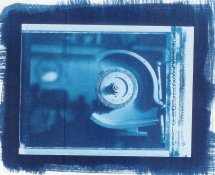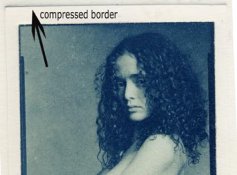athanasius80
Member
Here's my situation. I'm printing cyanotypes onto Arches Platine, and I can't get the paper grain to ever completely disappear. (See example below.) Would subbing with arrowroot starch or gelatin help smooth this out?
I'm using traditional cyanotype, in this case two parts Solution A to one part Solution B. No dichromate. Double coated on Arches Platine and exposed with a light box. Negative was Polaroid type 55.
Thanks, I'd love to hear any advice!
(Oh yeah, disregard the vertical line on the left. Its CSS: Crappy Scanner Syndrone)
I'm using traditional cyanotype, in this case two parts Solution A to one part Solution B. No dichromate. Double coated on Arches Platine and exposed with a light box. Negative was Polaroid type 55.
Thanks, I'd love to hear any advice!
(Oh yeah, disregard the vertical line on the left. Its CSS: Crappy Scanner Syndrone)





